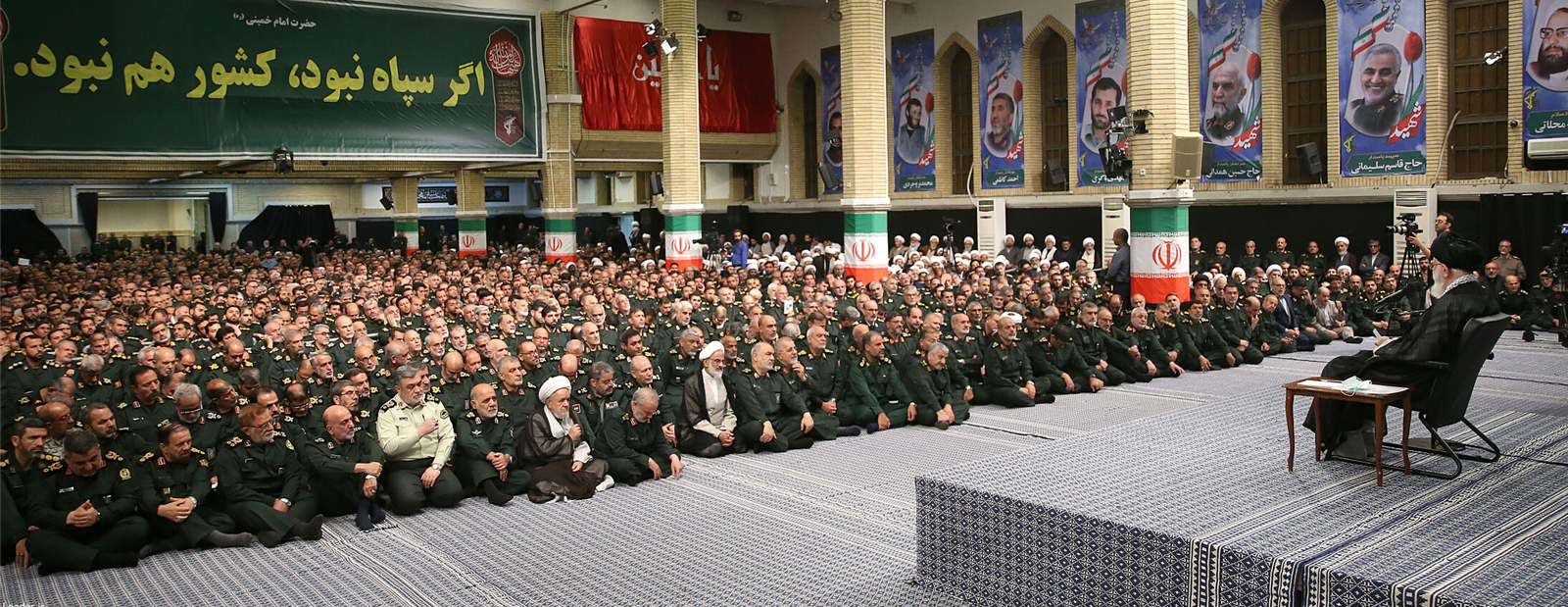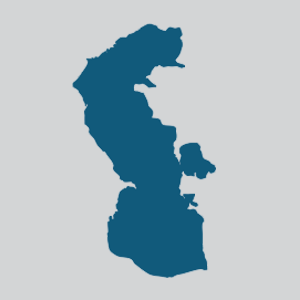Search

Reports
Islamic Revolutionary Guard Corps: structure, functions, missions, capabilities

The national and religious specifics were reflected in various spheres of life of the Islamic Republic of Iran (IRI), including the Armed Forces (AF) when these were formed. At present, they are the biggest in terms personnel strength in the Near and Middle East and have the experience of conducting combat operations gained during the Iran-Iraq war (1980-1988).
Currently, the Islamic Revolutionary Guard Corps (IRGC or the Corps) is of special interest both as a military and political organization that has significant influence on the country’s domestic and foreign policy as well as the main tool of the Iranian Supreme Political and Religious Leadership (SPRL) to promote and protect the national interests of the IRI in the Near and Middle East region.
Historical background
On February 11, 1970 an Islamic revolution won in Iran and the regime of Shah Mohammad Reza Pahlavi ceased to exist. One of the main reasons of the Islamic revolution was the rejection of the shah’s large-scale reforms by the Shi'ite Islamic clergy, large landowners and industrialists, as well as by intellectuals and students. [1]
On April 1, 1979 following the results of the nationwide referendum the Islamic Republic of Iran was proclaimed.
The Islamic revolution became a serious social upheaval that brought about chaos to the country, when the security agencies that had operated under the shah’s rule practically ceased to exist. Under these conditions, the top military leadership declared neutrality of the armed forces: the army did not rise to defend the monarchy, but at the same time it did not act on the side of the revolutionaries.
Analysis of the reasons and origins of the IRGC establishment indicates that under the conditions of the Islamic revolution the Iranian army, though theoretically being a very essential state institution, could not claim a special role in the establishment of the new statehood. It was deprived of the opportunity to exert influence on the choice of paths for further social development of the country. [2]
Rising activity of the revolutionary groupings which did not agree to build a new state in accordance with the velayat-e faqih doctrine of the leader of the Islamic revolution Ayatollah Khomeini and separatist sentiments of the Iranian Kurds caused great concern of Iran’s new revolutionary leadership. Being aware of the danger of the unfolding situation followers of the Ayatollah Khomeini realized the necessity to create formations that would ensure complete authority for them.
The country’s new leadership could not rely on the remnants of the regular army. Repressions dropped down on the top and senior command staff of the former shahinshah armed forces. As a result, about a hundred of the shah’s generals and officers were executed by shooting by the Islamic revolutionary committees and more than two thousand were subjected to repressions. Many of the generals and officers, as well as military specialists emigrated from Iran. Units and formations lost combat effectiveness, were disorganized and demoralized. In early 1979 the manning status of officers in the Iranian army was 45-55% of the staff schedule, that of privates and sergeants 60-70%. About 45% of armament and military equipment were in a disabled state. [3]
The Shia clerics who occupied key positions in the new government went out of the way to downgrade the importance of the army placing emphasis on the establishment of armed formations committed to the ideas of the Islamic revolution.
In accordance with the concept of Ayatollah Khomeini’s followers the new military and political organization led by the Shi’ite clergy was supposed to consolidate the poorest stratas of the populace and social drop-outs (as the most religiously fanatical) to struggle with political opponents, to retain power in the hands of the SPRL and to exercise political measures aimed at the establishment of Islamic statehood in the country. The Islamic Revolutionary Guard Corps became such organization.
The decision on consolidating political groupings and their armed detachments loyal to the new authorities was taken on February 24, 1979 and officially the announcement on the establishment of the IRGC was made on April 22 of the same year. The earlier formed Command Council of the IRGC determined the main missions of the new organization:
- Rendering assistance to the police and security forces in fighting counter-revolutionary elements;
- Fighting against armed counter-revolution;
- Repulsing the armed forces of other states in the event of an attack against Iran;
- Military and political, ideological, moral and psychological training of the organization’s members;
- Rendering assistance to the IRI in the promotion of ideas of the Islamic revolution;
- Supporting liberation movements in other countries and their «pursuit of justice for all the oppressed of the world under the guidance of the leader of the Islamic revolution»;
- Rendering assistance to the government in damage control of emergencies in the territory of the country, as well as in implementation of the IRI development plans. [4]
It is worth noting that Iran chose as the holiday «Islamic Revolutionary Guard Corps Day» October 9, the day of death of the third Imam of Shia Islam. The day was fixed proceeding from ideological considerations since the IRGC, in the opinion of Iran’s authorities, is the perfect sample of the Shi’ite army. The holiday has been celebrated in Iran since 2022 to emphasize the importance of the Corps in ensuring the rule of law and order and protecting the values of the Islamic state system.
Following the official announcement on the establishment of the Corps active formation of IRGC detachments commenced in the cities of the country. Staffing was done mainly from the religiously fanatical representatives of the poor stratas of the population upon the recommendation of the Shia clerics. The IRGC detachments formed were actively engaged in defeating the left revolutionary organizations and in suppressing the Kurd movement for national autonomy in August 1979. By the beginning of the Iran-Iraq war in September 1980 strength of the IRGC reached 60 thousand men.
At the beginning of the Iran-Iraq war Iran’s SPRL realized the IRGC’s potential capabilities and determined the paths of transforming the organization from a paramilitary force into a major component of the Armed Forces. In March 1980 within the Corps’ structure an IRGC Quds Force was established [transformed in 1982 into the Quds Special Forces (SF)], and in December of the same year the organization of the oppressed Iranians Basij [the Basij organization for short] was assigned to the Corps. It was established in November 1979 and had been organic to the Ministry of Interior of Iran.
By decree of Iran’s Supreme Leader Ayatollah Khomeini «On establishment of the IRGC’s Ground, Navy and Air Forces» dated September 1985 the Corps was transformed into a powerful military force with the strength of 500 thousand men and became one of the components of the Armed Forces to have its own service branches – the Ground Forces, the Air Force (from 2012 the Aerospace Force) and the Navy.
Upon completion of the eight-year-long war the process of reconversion and return to peaceful life commenced. The movements opposite to the supreme political and religious leadership were practically fully destroyed and it seemed that there is no need for such military and political organizations as IRGC and Basij.
Ali Akbar Hashemi Bahramani Rafsanjani elected President of Iran in 1989 who was one of the founders of the IRGC put forward a plan to merge the Army and the Corps into the unified Armed Forces. However, his plans were opposed by the new Supreme Leader of the IRI Ali Khamenei and the top command of the Islamic Revolutionary Guard Corps.
Since the end of the Iran-Iraq war and up till now the IRGC has undergone considerable changes. The most serious reforms pertaining to the organizational structure were carried out in 2009 following the advent of the IRGC’s new Commander-in-Chief Mohammad Ali Jafari.
According to Article 110 of the Constitution of the Islamic Republic of Iran adopted in 1979 (in 1989 amendments were made), the supreme leader is the only official in the state the IRGC reports to and the top command of the Corps is accountable to him only.
Therefore, the Islamic Revolutionary Guard Corps established in 1979 from paramilitary detachments to safeguard the accomplishments of the Islamic revolution is the primary military and ideological tool of the SPRL and of the supreme leader personally from the date of establishment up to now.
IRGC’ status within the structure of Iran’s Armed Forces
At present, the IRGC plays the most important role within the structure of Iran’s Armed Forces which are the largest in terms of personnel strength in the Near and Middle East countries (610 thousand men). They are built based on the military and political objectives of the Iranian leadership, as well as on the economic capabilities, national and religious features of the state.
In accordance with the «Law on the Armed Forces of the Islamic Republic of Iran» dated 1987 they are intended to safeguard independence, territorial integrity and the state system of Iran, national interests in the territorial waters of the Caspian Sea, Persian Gulf and the Gulf of Oman, on the border rivers, as well as to render assistance to the Islamic nations or destitute peoples irrespective of their affiliation with Islam, at their request for protection of their territory against an attack or seizure by the troops of an aggressor.
A peculiar feature of Iran’s Armed Forces is that they are composed of three independent components - regular armed formations with the respective command and control system both in peace-time and war time, namely: the Army, the Islamic Revolutionary Guard Corps and the Law Enforcement Force (LEF).
The General Staff of the Armed Forces of the Islamic Republic of Iran (GS AF IRI) is the most senior command and control body to which the three components of Iran’s Armed Forces are subordinate. Currently, the Chief of the General Staff of Iran’s Armed Forces is Major-General Mohammad Hossein Bagheri appointed to this position in 2016.
The Ministry of Defence and Armed Forces Logistics in its current form was established after the conclusion of the Iran-War in 1989. Its main missions are to supply the Armed Forces, to direct research and development in the field of design and production of new armaments, to participate in planning the military budget. Besides, it is responsible for medical supplies and social welfare, protection of the servicemen’ rights, development of the military and technical cooperation with other countries. It is worth noting that only the IRGC representatives are appointed to the executive positions of the Ministry of Defence and Armed Forces Logistics. The majority of the deputies to the Minister of Defence are, as a rule, also members of the Corps.
The Air Defence Force «Khatam-al-Anbia» is an «above-component» and «above-service» entity of the state military organization. [5] Operationally the air defence forces of the three components of the Armed Forces of the Islamic Republic of Iran are subordinated to it.
The Law Enforcement Force was set up in 1991 when the gendarmerie, police and the remaining revolutionary committees were merged in conformity with the law adopted in 1990.
Being the third component of the Armed Forces and reporting to the GS AF IRI on the defence matters the LEF is actually a police force tasked with maintaining law and order in the country. Control over their activities (in peace-time) is vested in the Ministry of Interior of Iran.
According to Article 143 of Iran’s Constitution, the Army of the Islamic Republic of Iran is «responsible for guarding the independence and territorial integrity of the country, as well as the order of the Islamic Republic». At the present time, the Army of the Islamic Republic of Iran consists of four armed services: the Ground Forces, the Air Force, the Navy and the Air Defence Force. Overall leadership is exercised by the Army Commander-in-Chief via the Joint Staff.
According to Article 150 of Iran’s Constitution, the Islamic Revolutionary Guard Corps is geared to «guarding the Islamic Revolution and its achievements». This mission was also confirmed in articles 1 and 2 of the IRGC statute.
The Corps is headed by the Chief Commander who is supported in his activities by the IRGC Supreme Council, the office of deputies and the IRGC Joint Staff. In April 2019 Hossein Salami who had previously served as the First Deputy Chief Commander of the IRGC was appointed the Chief Commander of the IRGC and was simultaneously promoted to the rank of Major-General.
The IRGC military component comprises three branches of the Armed Services (Ground Forces, Aerospace, Navy), a separate arm Quds Special Force, the Basij organization. The IRGC strength is estimated at 190 thousand men.
The IRGC is actively engaged for accomplishing military and political missions in the Near and Middle East region. Besides, the Corps supervises the nuclear and missile programs extremely important for Iran.
A unilateral withdrawal of the USA from the Comprehensive Plan of Action (JCPOA) caused Iran to make a considerable progress since May 2019 in the restoration of its nuclear infrastructure which is one of the key elements of the nuclear program.
Iran’s missile program is closely watched by the country’s SPRL which considers missile weaponry as an operational and strategic means to deter any adversaries from attempts to exert military and forceful pressure on Teheran.
The development of Iran’s nuclear and missile programs became a pretext for the USA and NATO to develop a European segment of the US global anti-ballistic missile system.
Therefore, it is possible to arrive at the conclusion that for a number of reasons IRGC has a special place in the structure of Iran’s Armed Forces:
- Today IRGC representatives occupy key positions in the Armed Forces of the IRI;
- IRGC is in charge of Iran’s nuclear and missile programs, most important from the point of view of the SPRL;
- IRGC servicemen carry out combat missions in the region ensuring protection and promotion of Iranian interests.
Influence on Iranian society
As was noted above, the main mission of the IRGC, according to the Constitution, is guarding the Islamic revolution and its achievements, however with time the IRGC became an entity parallel to the state that influences the activities of the authorities.
Besides, the liberalization of economy during the rule of President Rafsanjani allowed the IRGC to move into a new field – economic – and to create its own powerful financial-economic base to influence all spheres of life in Iran by means of economic levers.
IRGC’s influence on the life of Iranian society ranges from the military, political, ideological, economic and judicial spheres to science and education, medicine, culture and mass media.
Numerous and influential representatives of the IRGC are present in all higher political bodies of Iran, such as the Supreme National Security Council, the Islamic Consultative Assembly (Majlis), the Expediency Council (or the Expediency Discernment Council of the System), the Supreme Council of the Cultural Revolution etc.
IRGC entities play a decisive role in the implementation of many state programs (such as, for instance, «The railroad of light»), participate in educational and learning processes of the educational institutions. This influence and interference are supported on the highest state, political and religious levels of Iran.
One of the IRGC’s components is Basij, Iran’s largest paramilitary organization having its representative offices practically in all cities, villages, state and public institutions of the country.
During the Iran-Iraq war members of Basij, poorly armed and poorly trained, proved their dedication and devotion during the wide employment of the «human wave» tactics.
The IRGC’s intelligence service is one of the most effective modern special services of Iran and operates under the auspices of the upper echelons of the political and judiciary authorities. Its structure comprises many centers engaged in the sphere of cyber security, as well as special units monitoring public and social networks in the Iranian segment of the Internet.
The IRGC’s structure comprises anti-riot units geared to control and suppress political and social protests of the population. One of the Corps’ major missions is to guard and ensure safety and security of Iran’s leaders, chief commanders of the branches of the Armed Forces, top governmental officials and the country’s capital.
The IRGC’s ideological division incorporates news agencies Tasnim, Fars, Akhbar-e Daneshju, Nasim, Javan newspaper, various electronic publications.
In the field of the economy the IRGC is represented by the Khatam al-Anbiya organization, one of the largest holding companies in Iran’s economy. Through the Bonyad-e Ta’avon-e Sepah Foundation this organization conducts its economic activities in the banking sector, in the service businesses, is engaged in construction projects, import of foreign goods and services.
The Corps exercises significant influence on Iran’s judicial system and exerts influence on the legal processes taking place in the country and on the court rulings taken during these processes.
Islamic Revolutionary Guard Corps is active in Iran’s scientific and educational spheres. Scientific and educational institutions of the Corps engaged in fundamental and applied research, developments in the military field and training of high-skilled staff in the interests of the IRGC include: the Imam Hossein Comprehensive University, Imam Hossein Military University, Baqiyat-allah University of Medical Sciences.
The Corps’ medical organizations (Jamaran Heart Hospital, Najmieh Hospital, Baqiyat-allah Hospital) render medical assistance not only to the IRGC members, but also to all residents of Iran in need.
The Owj Arts and Media Organization related to the IRGC is one of the biggest film studios in Iran.
Conclusion
In the latest decade IRGC focused on the implementation of the «development path of the Islamic Republic» declared by Iran’s leader Ayatollah Ali Khamenei and including five consecutive stages: Islamic revolution, Islamic power, Islamic government, Islamic society, Islamic civilization. Entities of the Corps provide ideological support, plan goals and objectives as well as undertake concrete measures.
Therefore, the IRGC now is Iran’s most influential military and political organization and one of the key components of its Armed Forces, as well as a very large economic, ideological and cultural entity the activities of which have an effect on the majority of life spheres of the Iranian society.
The Corps serves as a military and ideological tool of the country’s SPRL and of Iran’s Supreme Leader personally to resolve military and political tasks in the Near and Middle East region and to protect Iran’s national interests.
1. Persian bastion/A.A. Baklitsky, M.S. Barabanov, A.V. Berezina and others; edited by Y.Y. Lyamin, R.N. Pukhov. – M. Center of Analysis of Strategies and Technologies. 2019. – 320 p. http://cast.ru/books/persidskiy-bastion.html
2. E.V. Dunayeva, V.I. Sazhin / Asia and Africa today. – 2020. – No.5 – p. 12-20.
3. The Military Power of the Islamic Republic of Iran/ V.I. Sazhin, Y.M. Bondar – M.: Moscow University publishing house, 2014. – 512 p.
4. Islamic Revolutionary Guard Corps: contemporary state and structure: monography / G.I. Shemet. – 2020. – 333 p.
5. Ànalysis of Contemporary State of Air Defence of the Islamic Republic of Iran: monography / G.I. Shemet. – 2021. – 222 p.







